I have had my very own forest fire. On Easter Sunday, I lent my volunteer, Hannah, to a neighbour for a few days, so I was home alone. Easter Monday we had insane SW winds. I was working at the computer when I saw – smoke! White smoke flying along the ground. From the area in which I had been burning with Hannah a few days before.
I ran down to look. The flames were licking merrily along a grassy bank and ditch. It had been well raked and cleared – it was amazing how little material was required to keep a fire going. In the ditch was my phone line, running half a kilometre from the nearest pole. It had been on the ground for years with no problems.
I ran back to the house. The phone was dead. “I’ll drive out for help,” I thought. The insane gusts were still beating the property. In one minute I encountered a tree across the road. Two more minutes there was another. I could see a third. 4 km to go. It would take too long.
Back home. I emailed a bunch of people, but most people are outside during the day and are not regular internet users.
I had recently purchased a pressure pump and two 100-foot fire hoses, as much for irrigation as fire fighting, but it was too far from the fire and I could not move the pump on my own. I couldn’t drive to the fire site; I couldn’t use the wheelbarrow as there was a ditch with a log bridge in the way. I started the pump and sprayed the ground in front of the fire, between it and the house; this area was fairly open. Now the wind was batting around and it drove the fire into a patch of grown forest. I could here a roar as a tree went up.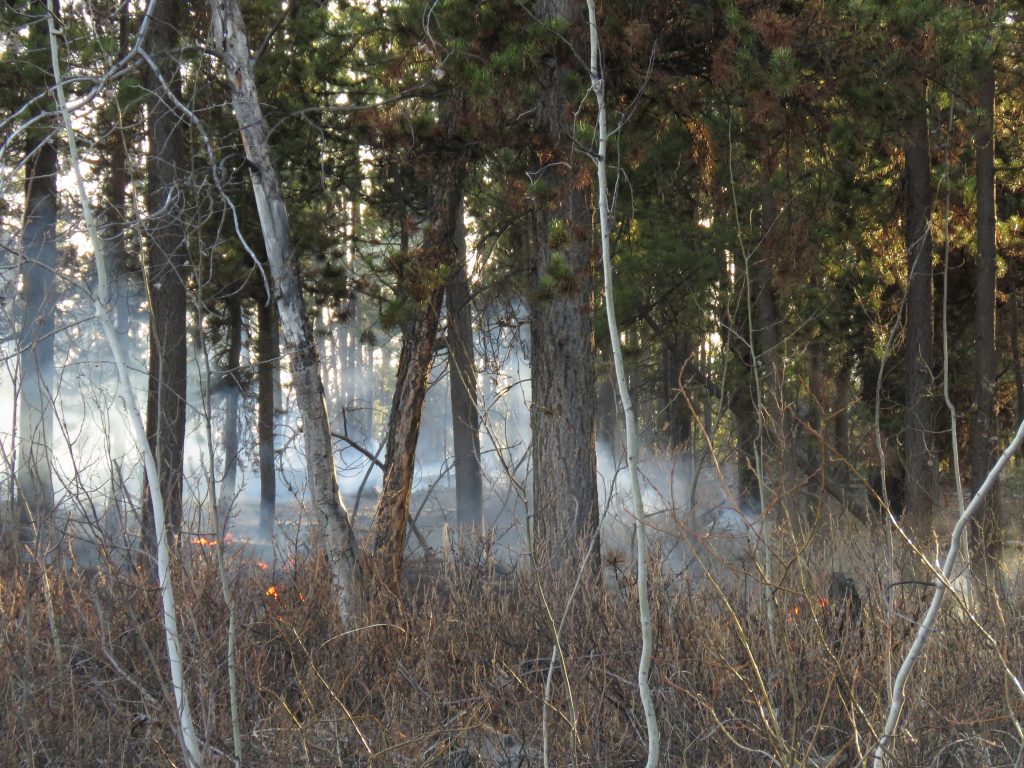 Back to the pump to spray again. Back to the road to cut out a few more trees. Back to the computer to see if anyone had answered. My original email was so misspelt, the first respondent thought it was a spam. I re-emailed, and included White Saddle Air Services, the local helicopter outfit who contracts to forestry during fires (with a dead phone I couldn’t call in the fire myself.). More spraying, more cutting trees along the road – I worked out later that there must have been 30 down altogether. Then I heard a vehicle door slam – two neighbours appeared. One was a logger, the other an experienced fire-fighter. Interior roads had been cutting fallen trees along Highway 20. They had seen the smoke and driven in to one of the neighbour’s property to alert him. The neighbour had not seen my email warning them to bring chain saws. They had come in on a side-by-side and cut some trees with an axe. They borrowed my saw to cut the road back out for a truck.
Back to the pump to spray again. Back to the road to cut out a few more trees. Back to the computer to see if anyone had answered. My original email was so misspelt, the first respondent thought it was a spam. I re-emailed, and included White Saddle Air Services, the local helicopter outfit who contracts to forestry during fires (with a dead phone I couldn’t call in the fire myself.). More spraying, more cutting trees along the road – I worked out later that there must have been 30 down altogether. Then I heard a vehicle door slam – two neighbours appeared. One was a logger, the other an experienced fire-fighter. Interior roads had been cutting fallen trees along Highway 20. They had seen the smoke and driven in to one of the neighbour’s property to alert him. The neighbour had not seen my email warning them to bring chain saws. They had come in on a side-by-side and cut some trees with an axe. They borrowed my saw to cut the road back out for a truck.
Forty minutes later they returned with more hoses and pumps. My pump did not seem to be working properly – the pressure was not pushing it up the small bank to the fire. Kurt is pinching the hose to encourage it. Note how clear we made the bank – but the fire still ran along it. It does not need much fuel when it is dry.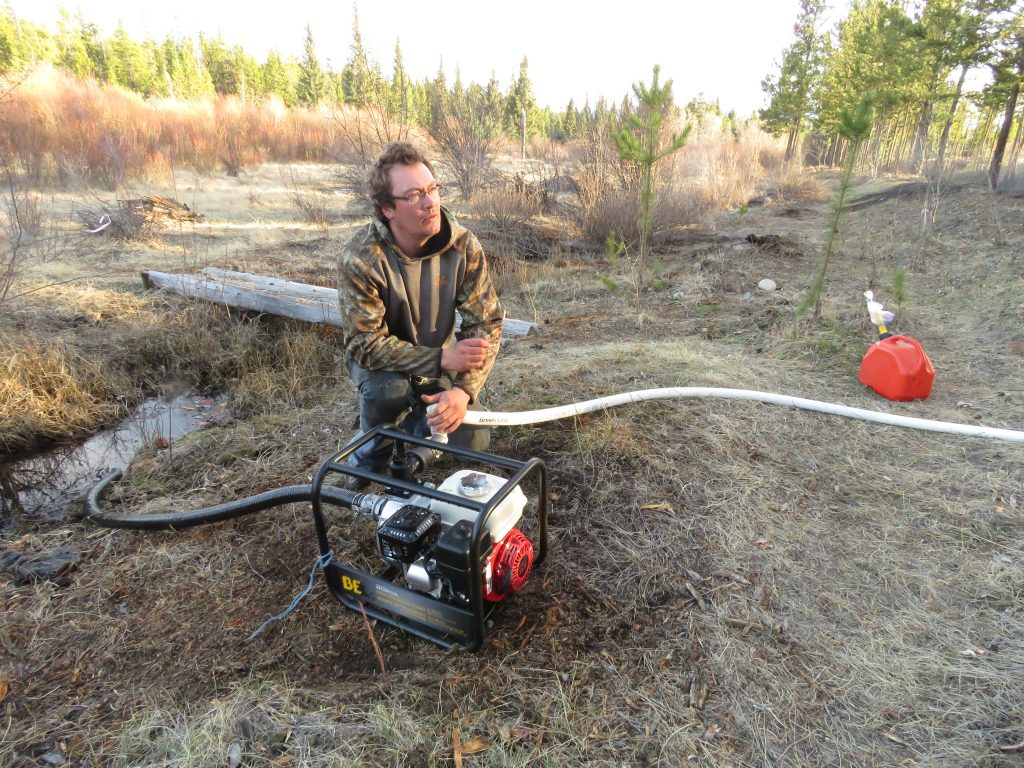 Eventually, Christoph got water.
Eventually, Christoph got water.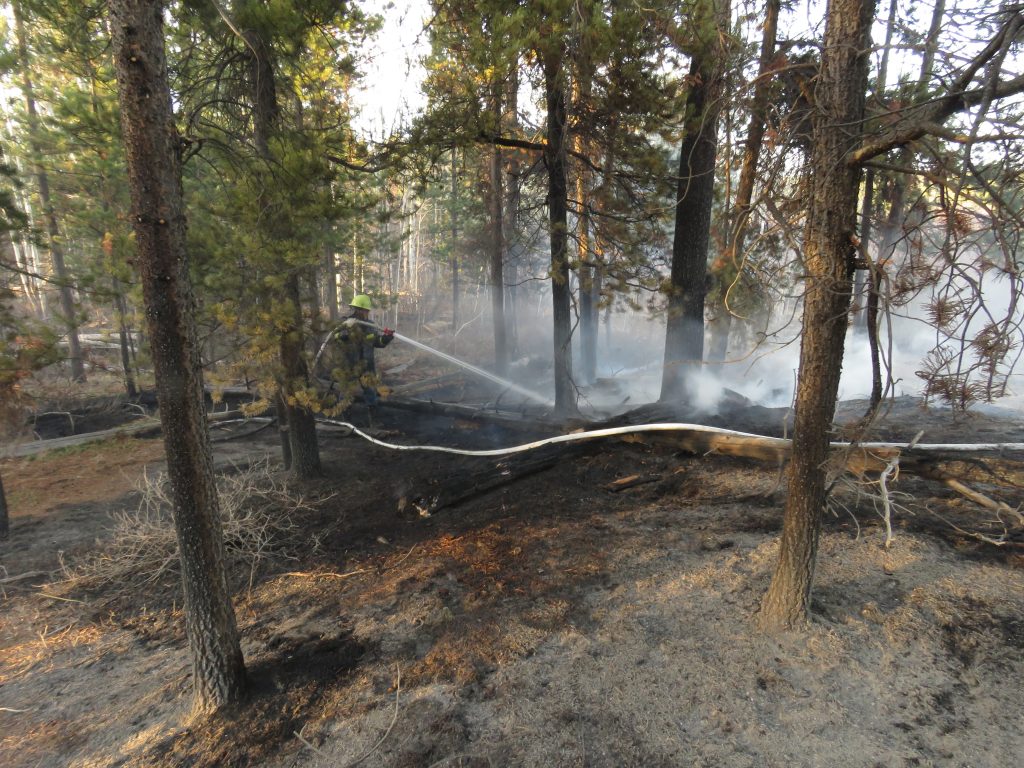 Christoph and his volunteer from Switzerland. (The hose was brand new and white when we started.)
Christoph and his volunteer from Switzerland. (The hose was brand new and white when we started.)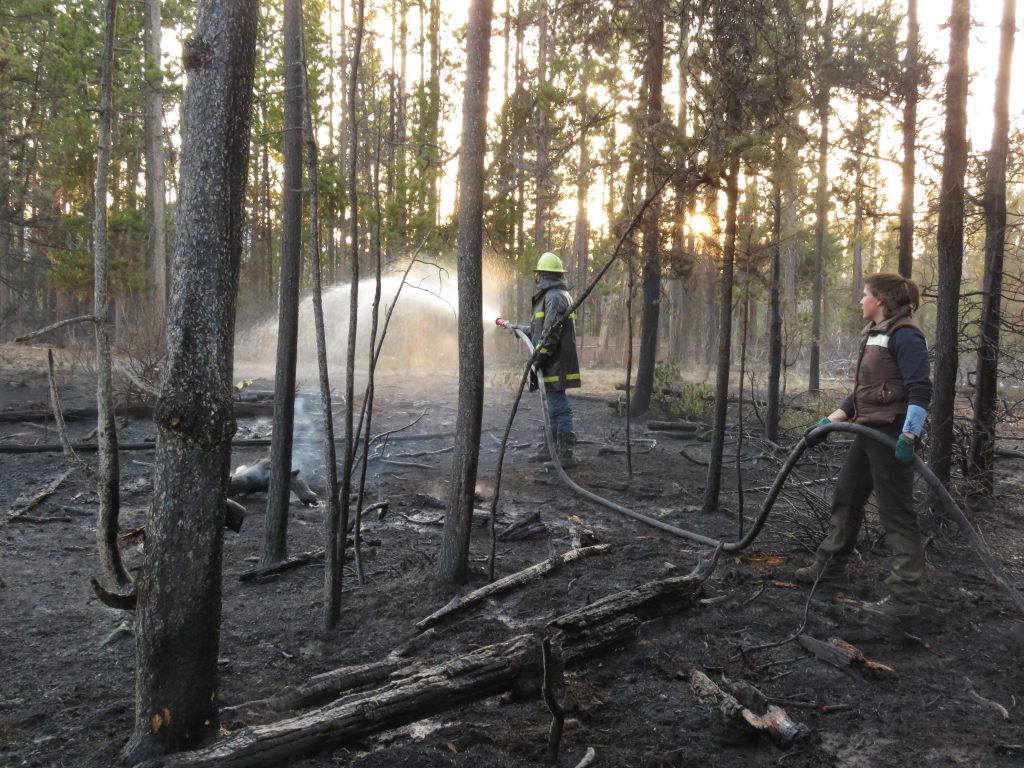 The wind was dying right down now so that helped a lot. I had been planning to try and burn the fallen trees in this area but the season had become too hot and dry. The fire actually did a good job for me.
The wind was dying right down now so that helped a lot. I had been planning to try and burn the fallen trees in this area but the season had become too hot and dry. The fire actually did a good job for me.
Peter arrived with his two kids and a neighbour’s. They are shovelling dirt onto the embers.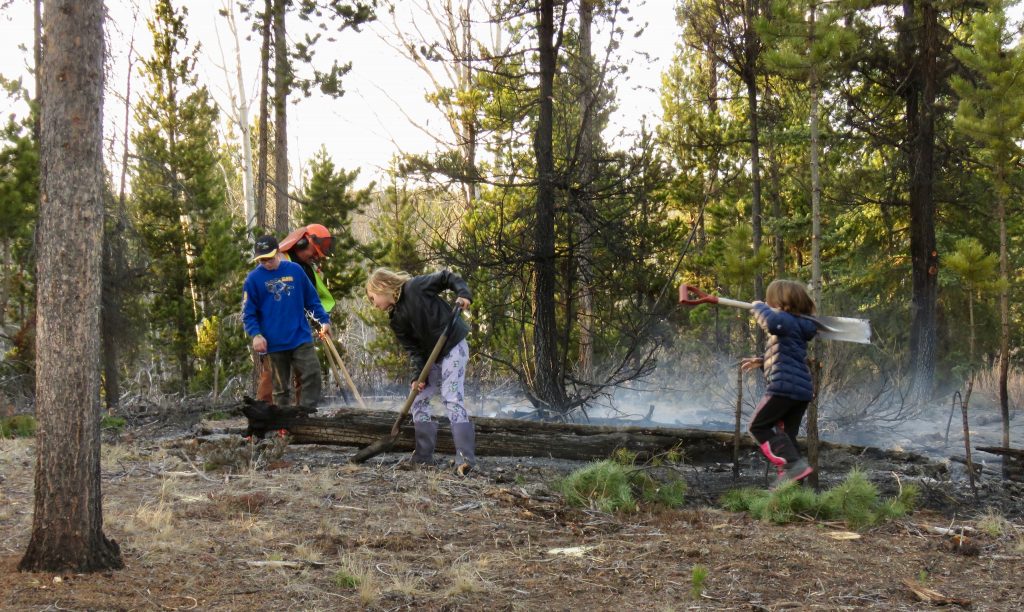 They were having a great time.
They were having a great time.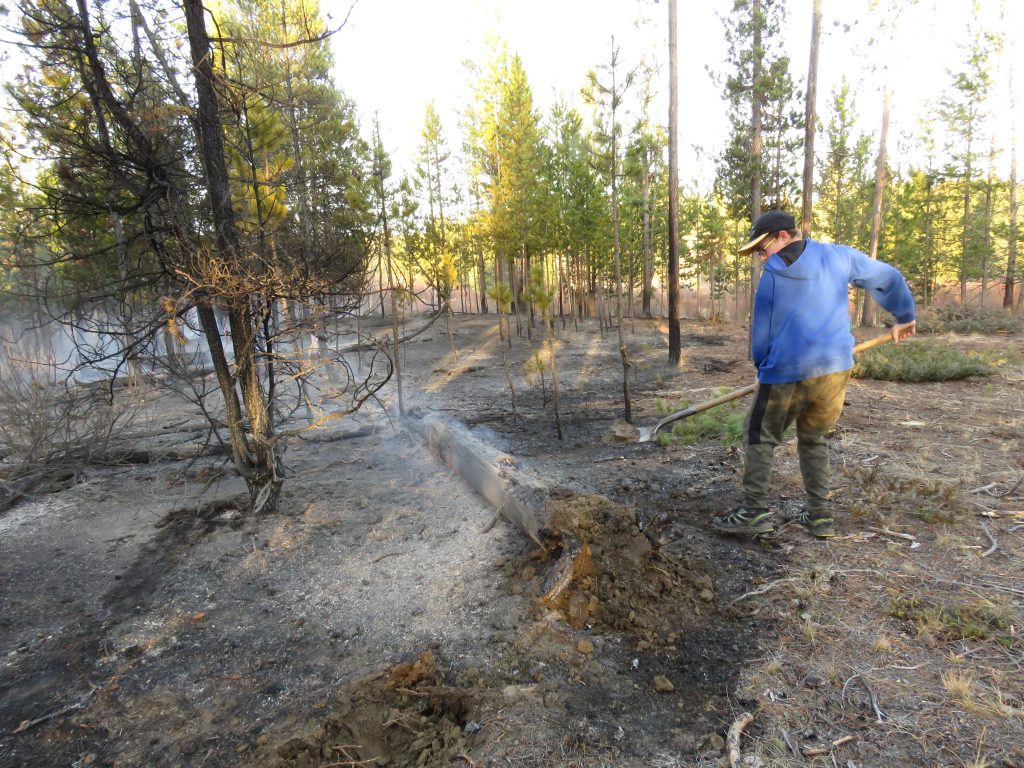 Finally, an Initial Attack crew of three forestry firefighters arrived. The helicopter pilot I had emailed had not been home but he had received my email and called the fire in to forestry. Their base was at Puntzi Mountain, over an hour’s drive east.
Finally, an Initial Attack crew of three forestry firefighters arrived. The helicopter pilot I had emailed had not been home but he had received my email and called the fire in to forestry. Their base was at Puntzi Mountain, over an hour’s drive east. 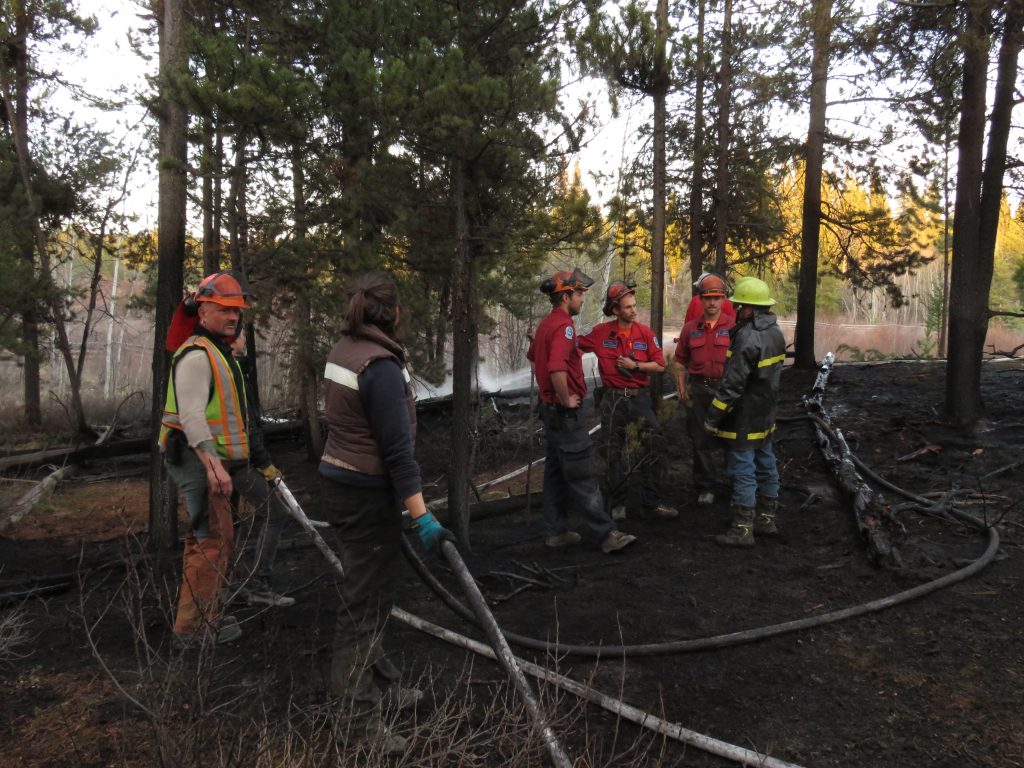 The Forestry guys said they could “action” the fire (ie, take over), but as it had been started from a burn pile I had failed to make sure was properly out (we had last burned 3 days before), I might have to pay for it. They also said that as my neighbours seemed well organized and properly equipped, the wind was dead and the fire was totally under control, it was my call as to whether they should stay. My neighbours were OK with the forestry’s non-participation.
The Forestry guys said they could “action” the fire (ie, take over), but as it had been started from a burn pile I had failed to make sure was properly out (we had last burned 3 days before), I might have to pay for it. They also said that as my neighbours seemed well organized and properly equipped, the wind was dead and the fire was totally under control, it was my call as to whether they should stay. My neighbours were OK with the forestry’s non-participation.
Two weeks later, three more forestry guys came to make sure the fire was properly out. They seemed quite impressed that my neighbours had done it so efficiently themselves.
I had planned to go to town a few days later, and took the pump in to the supplier. After some initial grumbling they gave me a new pump. It is twice as powerful and builds up pressure very quickly. I now have more hose so feel confident I can reach most places on my property – as long as the pond below the house has water in it. It sometimes dries up completely the summer – then the nearest water is over 1/2 km away.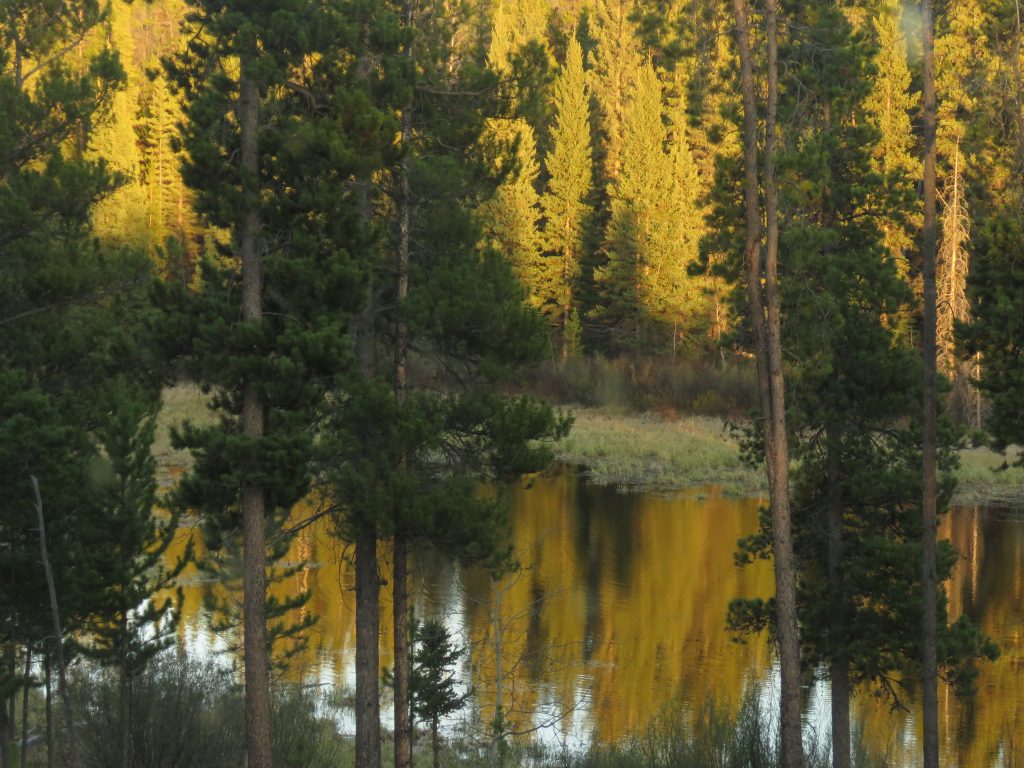 When in town I hunted around for a 100-foot section to replace the burned part of my phone line. The guy in the store gave me a lesson how to splice it.
When in town I hunted around for a 100-foot section to replace the burned part of my phone line. The guy in the store gave me a lesson how to splice it.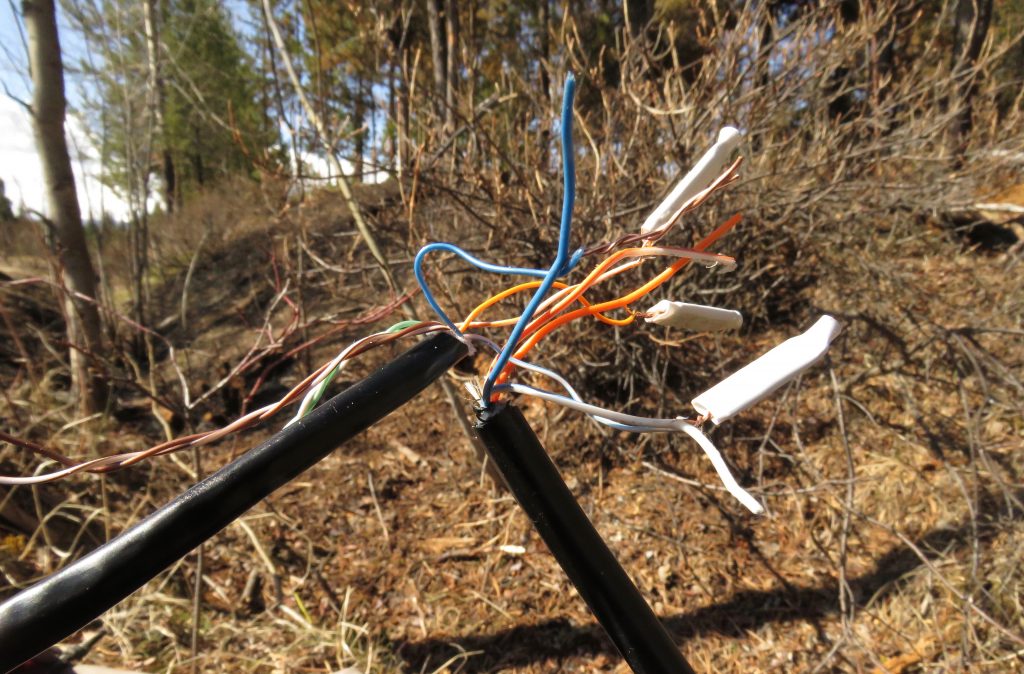 To my immense surprise, I must have done it correctly as the phone now works!
To my immense surprise, I must have done it correctly as the phone now works!
Since the fires of 2017, my neighbourhood has got together and has formed a Fire Cache group. My very own forest fire and another two days earlier at Tatla Lake, showed how poor our communications were. The Fire Cache group is working with the West Chilcotin Search and Rescue (most people belong to both groups anyway) and we are sorting out radio communication in the event that both Internet and land phone fail as they did in 2017. (There will never be cell phone service here: too few people and too many mountains in the way.) I have just purchased a hand held radio but have not played with it yet – too much other stuff to catch up on.
We are also having Fire Cache practices. A fire cache consists of tanks that fit onto a pickup, backpack spray cans, pumps, hoses, pulaskis, shovels, and other bits and pieces. There will eventually be six in our neighbourhood; currently three are extant. On this day we met at the cache half way down Tatlayoko Road and drove down to Tatlayoko Lake to practice filling the tanks with water, driving to a bladder, filling the bladder, and using hoses to put out the fire. (No burning allowed by this point so we just pretended.)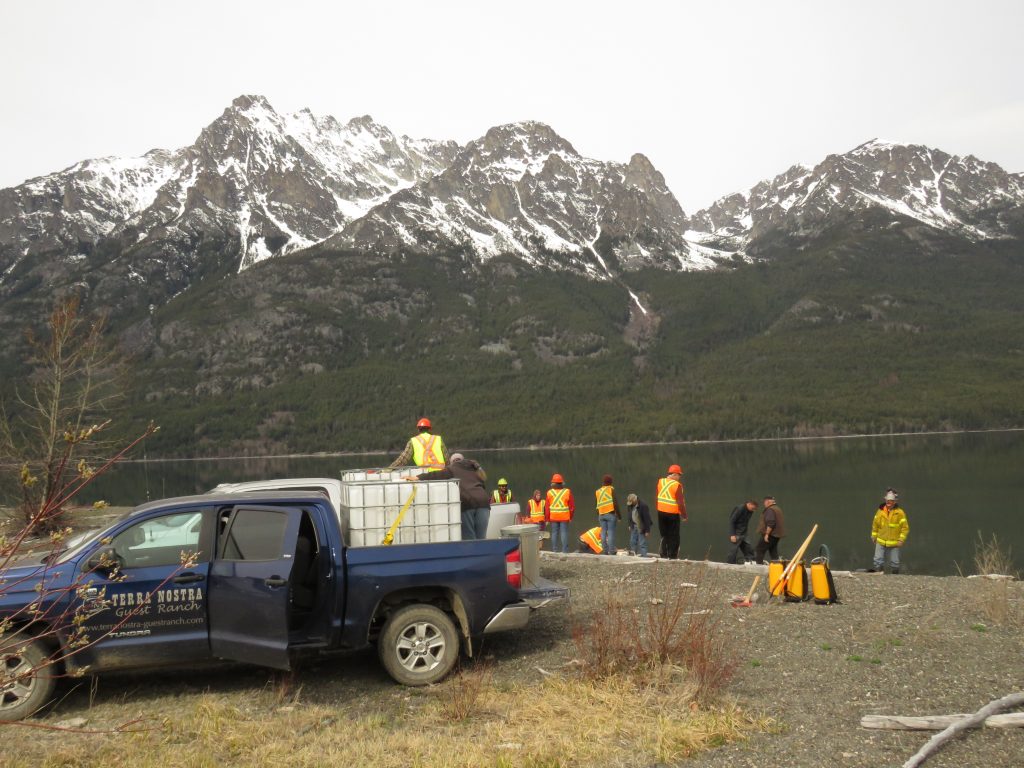
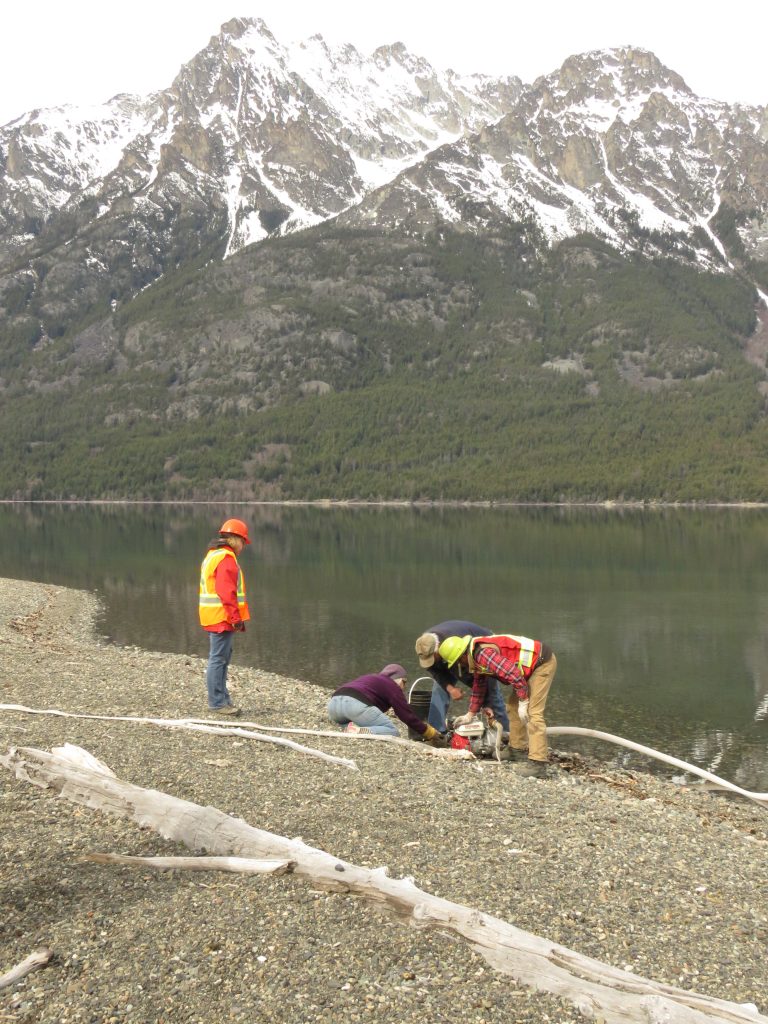
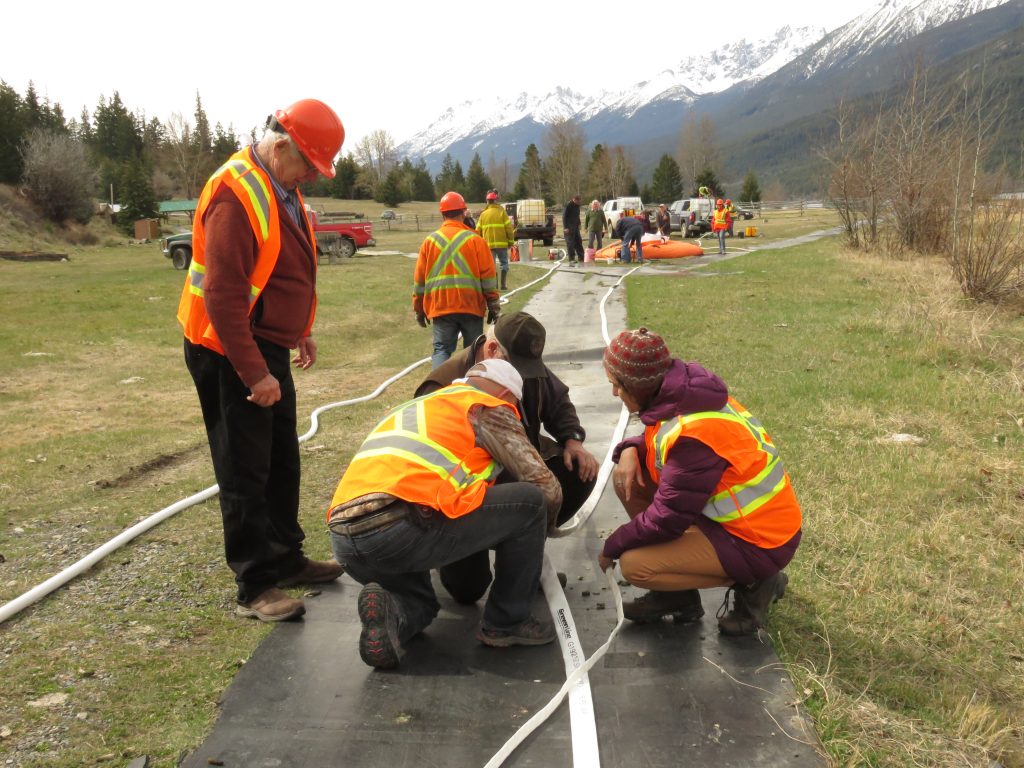 Our attempts to fight these fires are actually in a grey area legally. Forestry will “action” all forestry fires and any private land fires they need to. But we will marshall together to protect our own properties; even with the long distances we have to drive between each other, we can still get going before Forestry arrives. That hour or two might make a very big difference. In 2017, because over 90 fires were started by lightning on the same day, it was 10 days before our local group got outside help.
Our attempts to fight these fires are actually in a grey area legally. Forestry will “action” all forestry fires and any private land fires they need to. But we will marshall together to protect our own properties; even with the long distances we have to drive between each other, we can still get going before Forestry arrives. That hour or two might make a very big difference. In 2017, because over 90 fires were started by lightning on the same day, it was 10 days before our local group got outside help.
Ironically, I was working on an edit for the fire book when I looked out of the window and saw the smoke of my very own forest fire. The editing process takes time – several different types of edits are used, and each time the authors have to go through the manuscript and check details. The very last edit will be along in a day or two – the complete layout with photo inserts – then it will go to the printers. It will be out late August. The book now has a title – coined by my co-author Fred Reid. Captured By Fire.
Every time I read through the manuscript, I re-live the angst of the 2017 season, and to have my very own forest fire right outside the window as I was hyped up from working on the book was definitely not fun!
